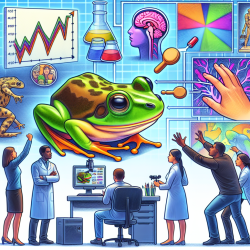Introduction
In the ever-evolving landscape of speech-language pathology, practitioners are continually seeking innovative strategies to enhance their practice and improve outcomes for children. Drawing parallels from unexpected sources can offer fresh perspectives. The transformation of KT&G, a former South Korean tobacco monopoly, into a global entity provides valuable insights into strategic adaptation and growth. This blog explores how these lessons can be applied to the field of speech-language pathology, particularly in the context of online therapy services like those provided by TinyEYE.
Understanding KT&G's Strategic Shift
KT&G's journey from a domestic monopoly to a global player was driven by several key strategies:
- Adaptation to Market Changes: Faced with declining domestic market share due to increased competition and stronger tobacco control measures, KT&G shifted focus to global markets.
- Product Innovation: The company developed new products tailored to international markets, enhancing their appeal and competitiveness.
- Strategic Partnerships and Acquisitions: KT&G established manufacturing facilities abroad and formed strategic partnerships to expand its global footprint.
- Corporate Social Responsibility (CSR): Engaging in CSR activities helped KT&G build a positive global reputation, facilitating market entry and expansion.
Applying KT&G's Strategies to Speech-Language Pathology
Speech-language pathologists can draw several lessons from KT&G's strategic evolution:
- Embrace Change: Just as KT&G adapted to a changing market, practitioners should remain flexible and open to new methodologies and technologies that enhance therapy outcomes.
- Innovate with Purpose: Developing innovative therapy techniques and tools tailored to the unique needs of diverse populations can improve engagement and effectiveness.
- Build Strategic Partnerships: Collaborating with other professionals and organizations can enhance service delivery and expand reach, similar to KT&G's global partnerships.
- Engage in Community Outreach: Like KT&G's CSR efforts, engaging with communities and stakeholders can build trust and support for speech-language services.
Encouraging Further Research
While KT&G's strategies provide a framework for growth and adaptation, further research is essential to tailor these approaches to the specific needs of speech-language pathology. Practitioners are encouraged to explore data-driven research to identify effective strategies for their practice. By integrating evidence-based practices with innovative approaches, speech-language pathologists can enhance their impact on children's communication skills.
Conclusion
The transformation of KT&G offers valuable lessons for speech-language pathologists seeking to improve their practice and outcomes for children. By embracing change, innovating with purpose, building strategic partnerships, and engaging in community outreach, practitioners can enhance their effectiveness and expand their impact. For those interested in exploring the original research paper, please follow this link: KT&G: From Korean monopoly to ‘a global name in the tobacco industry’.










